Key takeaways:
- The principle of least privilege enhances security and streamlines user experience by limiting user permissions.
- Implementing robust web security measures builds customer trust and fosters user loyalty.
- Regular software updates and security assessments are crucial to prevent vulnerabilities and maintain effective security protocols.
- Learning from security challenges, such as breaches and misconfigurations, is essential for improvement and fostering a culture of security awareness.
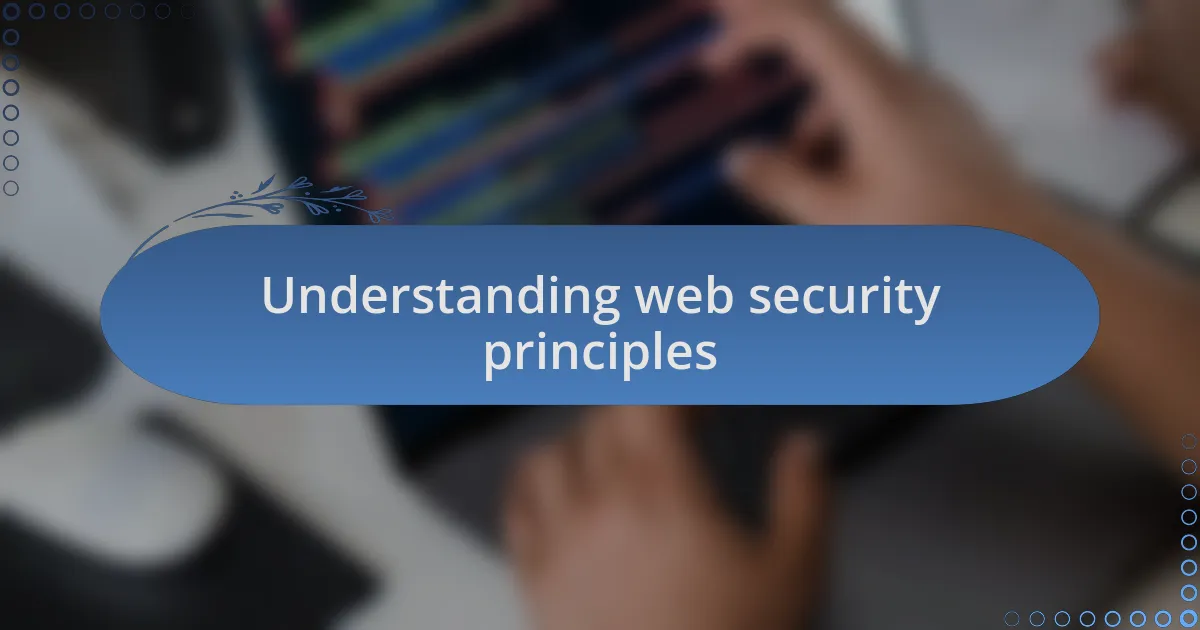
Understanding web security principles
When I first delved into web security, I quickly realized that understanding basic principles is foundational for any developer. For instance, the concept of least privilege struck me as a game-changer. I remember a project where limiting user permissions not only enhanced security but also streamlined the user experience.
Another essential principle is the importance of data encryption. I once worked on a site that processed sensitive information, and implementing SSL certificates transformed the way I viewed data security. It dawned on me how vulnerable unencrypted data can be, prompting me to advocate for encryption in every project I’m part of. Aren’t we all protective of our personal information? This principle truly resonates with anyone who values privacy.
Finally, regular updates and patch management cannot be overlooked. I learned this the hard way when an old framework led to a security breach. It was a wake-up call for me. Why wait until something goes wrong? Keeping software up-to-date ensures that we’re not just reactive but proactive in safeguarding our digital environments.
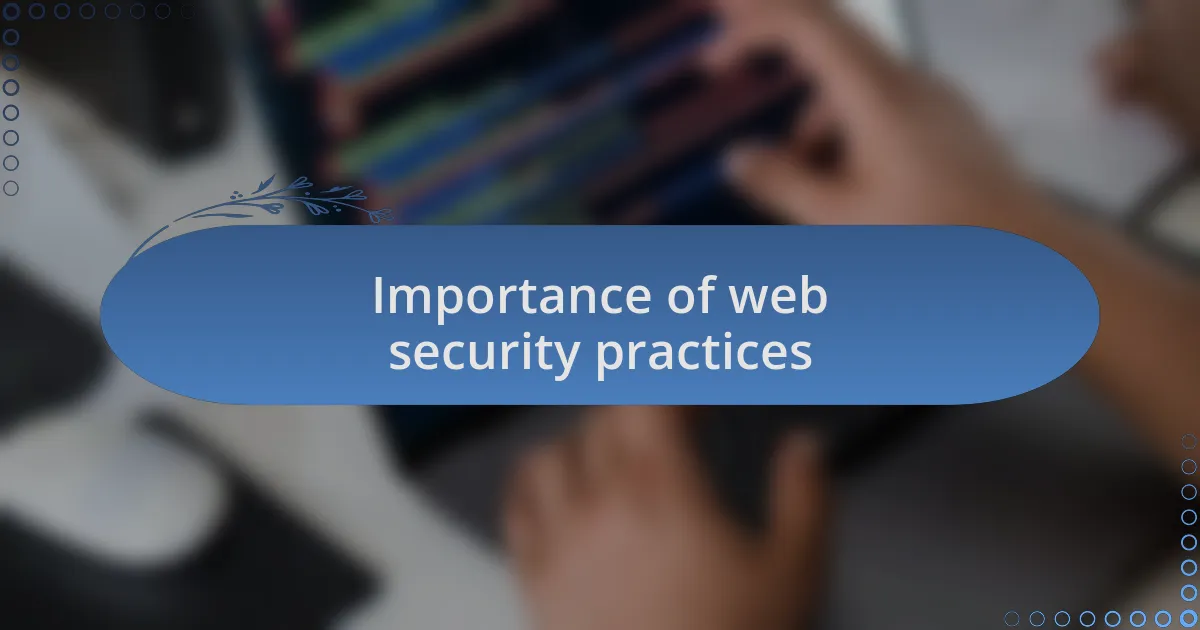
Importance of web security practices
The importance of web security practices became vividly clear to me after I faced a significant scare with a client’s website. It was a routine maintenance check when I discovered a vulnerability that could have exposed sensitive customer data. I remember the knot in my stomach, realizing how one oversight could lead to disastrous consequences for an entire business. This experience cemented the idea that prioritizing robust security measures is not optional; it’s essential.
Moreover, I learned that web security practices do more than just protect data—they build trust. During a meeting with a potential client, I highlighted our stringent security protocols and saw their relief visibly wash over them. It struck me how security can be a selling point, creating confidence in a brand. Can you imagine navigating online without the assurance that your data is safe? When businesses prioritize security, they not only protect themselves but also foster loyalty among their users.
Lastly, as I’ve increased my focus on implementing best practices, I’ve experienced the peace of mind that comes with knowing I am shielding myself and my clients from digital threats. It’s a relief to launch a project knowing that security measures are robust and well-integrated. How often do we take a moment to appreciate that security is the backbone of user experience? Emphasizing web security isn’t just about compliance; it’s about creating a safe digital space that encourages creativity and innovation.
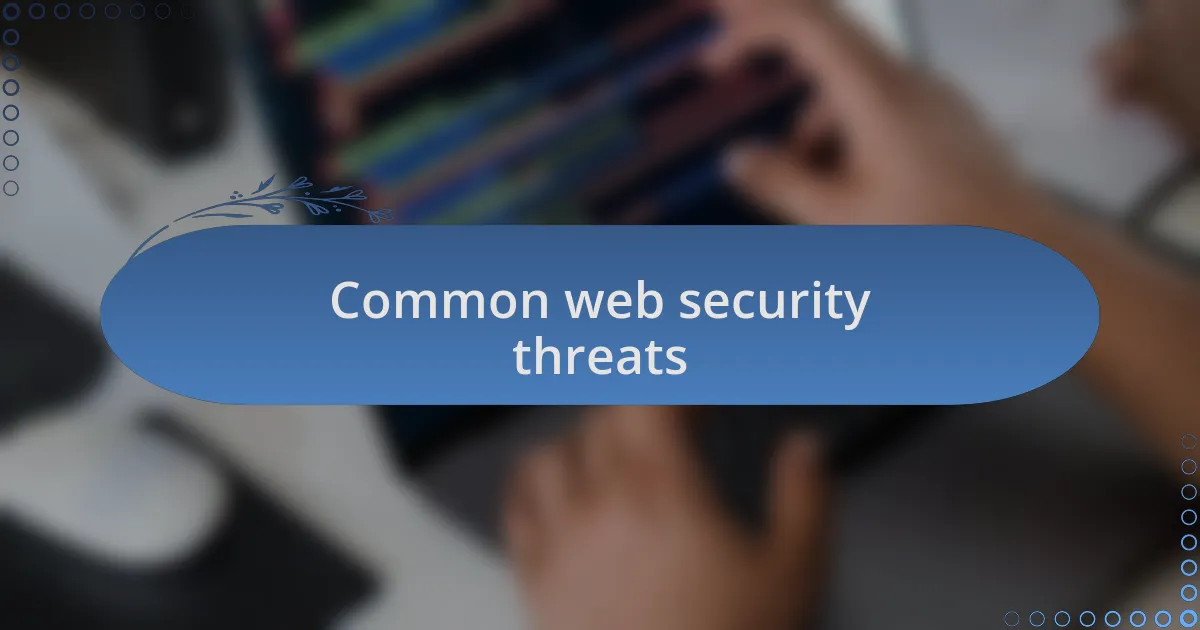
Common web security threats
It’s astonishing how many web security threats are out there waiting to strike. I vividly recall a project where a client’s site faced a DDoS (Distributed Denial of Service) attack, which overwhelmed the server and caused significant downtime. I remember the frustration of trying to reassure my client while we scrambled to restore normal operations. Such attacks are not just a nuisance; they can result in lost sales and damage to reputation.
Another common threat is SQL injection, which I encountered during a code review. I found that an open input field allowed malicious users to manipulate the database. The moment I realized the implications, I felt a chill run down my spine—one unsuspecting input could unleash chaos. It’s unsettling to think that a simple oversight could lead to unauthorized access to sensitive information. Can you imagine the loss of trust from users if their data is compromised?
Phishing attacks are perhaps one of the most deceptive threats I’ve witnessed. I once received a seemingly innocent email that looked like it came from a reputable source but was actually a ploy to gain access to personal information. The thrill of realizing I had almost fallen for it made me acutely aware of the need for vigilance. As you navigate through the digital landscape, I urge you to stay cautious; the consequences of underestimating these threats can be grave.
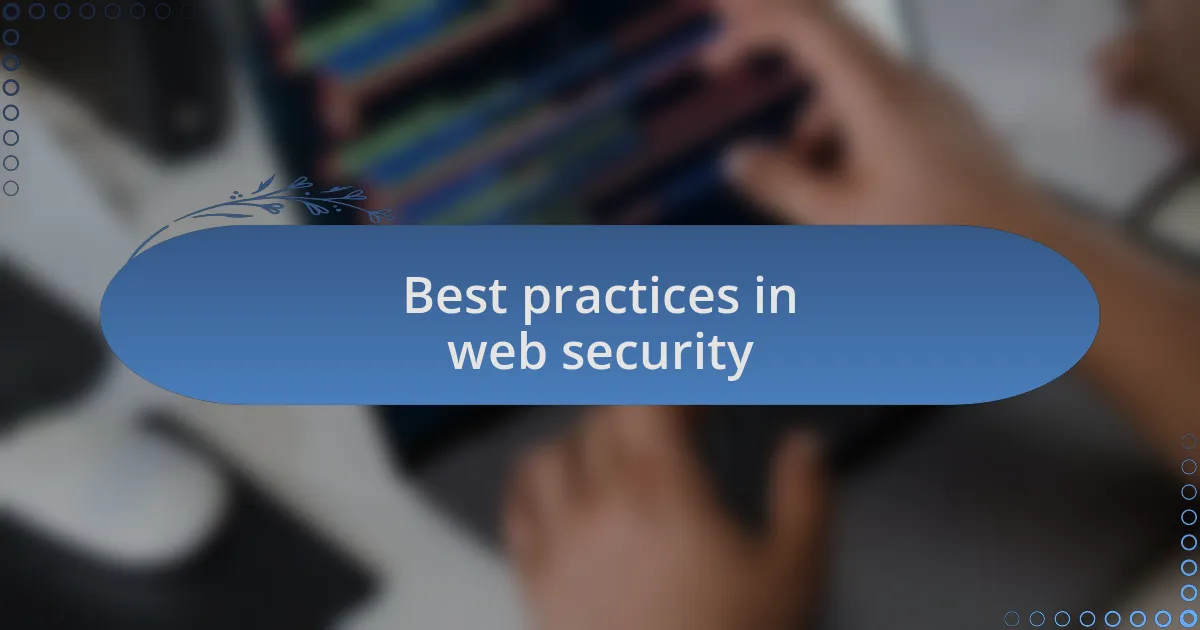
Best practices in web security
Implementing strong password policies is a straightforward yet effective way to bolster web security. I learned this firsthand after observing a significant security breach where weak passwords were the gateway for hackers. It left me pondering, how many times do users opt for “123456” or “password”? Encouraging the use of complex passwords can be a game-changer.
Regularly updating software and frameworks is another critical practice. I remember a time when I neglected to update a CMS plugin, which later became the entry point for a malicious attack. The panic that ensued as I rushed to address the vulnerability was a wake-up call. Simply put, staying up to date is not just about enhancements; it’s about safeguarding what you’ve already built.
Lastly, utilizing HTTPS is essential in today’s web landscape. I recall transitioning a client’s site from HTTP to HTTPS and witnessing the visible boost in user trust and SEO rankings. It was gratifying to see those little padlock icons next to their URLs. Isn’t it reassuring for users to know their data is encrypted while in transit? This simple switch can significantly elevate a site’s security posture.
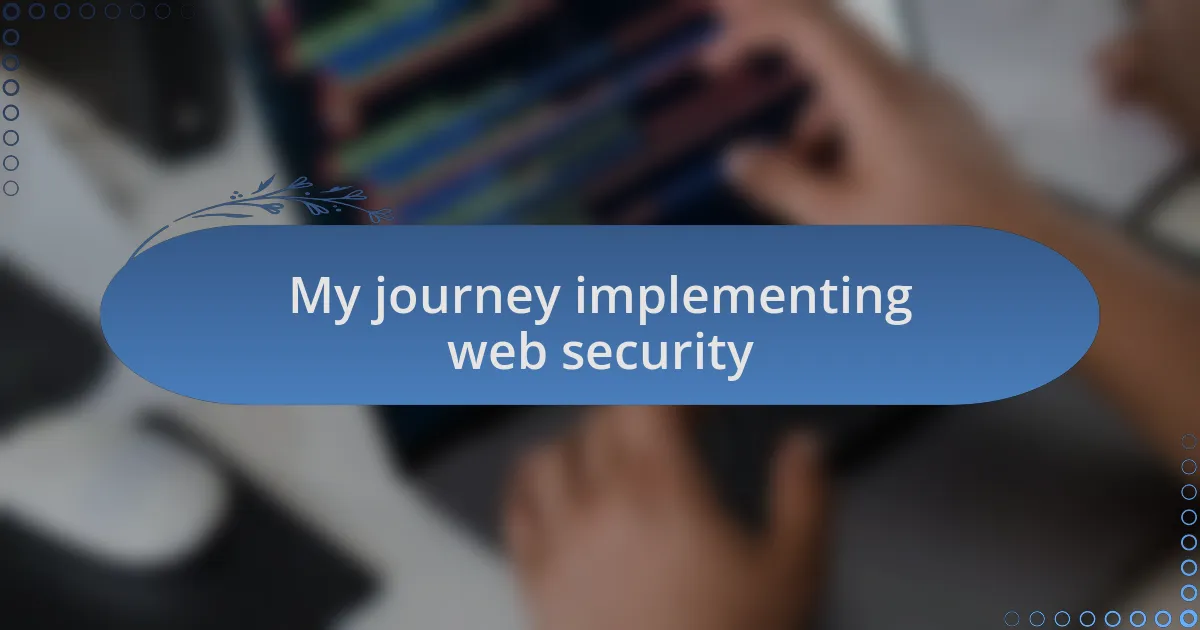
My journey implementing web security
Implementing web security has been quite the journey for me. I vividly recall the first time I integrated two-factor authentication into a site. At first, I thought it might deter users, but the feedback was overwhelmingly positive. People appreciated the added layer of security, and I learned that sometimes, users value safety just as much as convenience.
As I progressed, I faced an intriguing challenge: securing sensitive user data. There was a project where I had to encrypt personal information, and I spent hours researching the best encryption methods. When I finally implemented it, the sense of relief was immense. It got me thinking—how often do we consider the weight of our responsibility to protect user data?
Through the years, I’ve discovered that regular security assessments are indispensable. Once, after conducting a routine check, I uncovered several overlooked vulnerabilities that could have had devastating consequences. The realization was eye-opening. How many other developers might overlook these routine practices? Each assessment not only enhances security but also reinforces my commitment to safeguarding users.

Lessons learned from security challenges
Encountering security challenges has been enlightening. I remember one instance when a website I was managing fell victim to a minor breach. It was disheartening to see the chaos it caused, but it taught me the importance of maintaining an up-to-date security protocol. How often do we take our defenses for granted, thinking it will never happen to us?
Another profound lesson came during a project where I implemented a content management system that was targeted by cross-site scripting attacks. The moment I discovered this exploit, panic set in. However, that experience became a catalyst for change. I realized the necessity of educating my team about secure coding practices. Is there a better way to foster a culture of security than through shared knowledge and vigilance?
Looking back, I understand the critical value of learning from failures. One particular instance involved misconfiguring access controls, which led to unauthorized access to administrative features. The embarrassment was tough to swallow, but it forced me to adopt a more meticulous approach to configurations. Isn’t it fascinating how mistakes can provide the most valuable lessons?